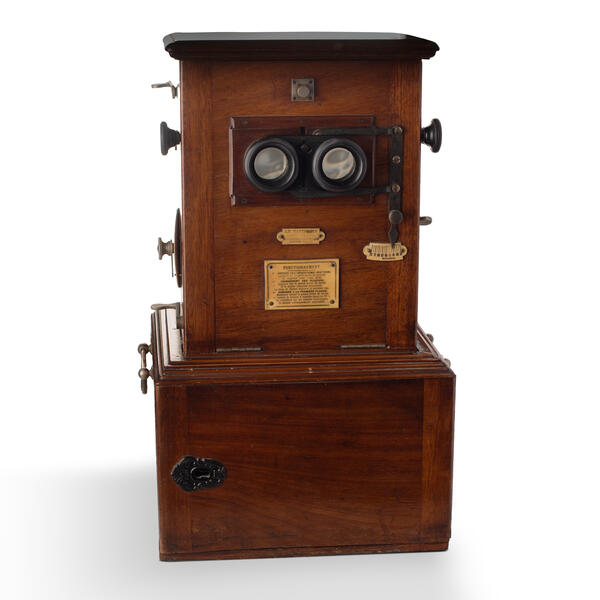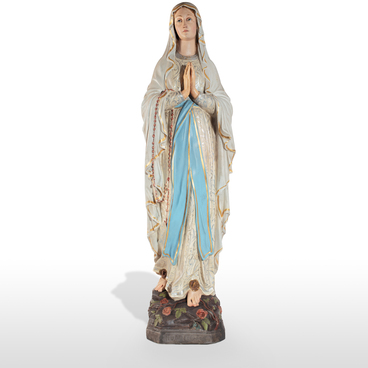The Taxiphote stereoscope from the museum collection is a handheld binocular optical device. It was manufactured in France in the early 20th century at a factory owned by Jules Richard, a French industrialist, entrepreneur, inventor, and manufacturer of stereographic cameras.
Jules Richard inherited the family business of making cameras and high precision instruments in 1871. For over half a century, he was one of the leading French experts in creating three-dimensional, or stereoscopic, images. In 1893, he patented a stereographic camera that he named the Verascope in honor of the Roman goddess of truth, Veritas.
In the 19th century, it was discovered that a three-dimensional photo could be created by using a pair of images taken from two different viewpoints. Such an image was known as a stereoscopic pair. The images had to be separated by about 65 mm, which corresponds to the average interocular distance. With the help of viewing equipment, each eye saw a different image which combined into a three-dimensional picture.
In the second half of the 19th century, stereoscopes became popular. The London Stereoscopic Company even had a marketing slogan, “No home without a stereoscope!” By 1860, the slogan became a reality. Thousands of stereo images of views from around the world could be bought at the price of modern-day postcards.
Researchers of this type of photography often say, “The stereoscope is the TV set of the 19th century.” This saying accurately represents the role of stereography as a means of mass communication at that time. Stereo images served as a source of both information and entertainment.
Stereoscopes were popular from the early 1850s until the end of World War I. Currently, stereography has evolved into 3D photography. People still watch 3D movies in cinemas, using a pair of special glasses instead of a stereoscope.


